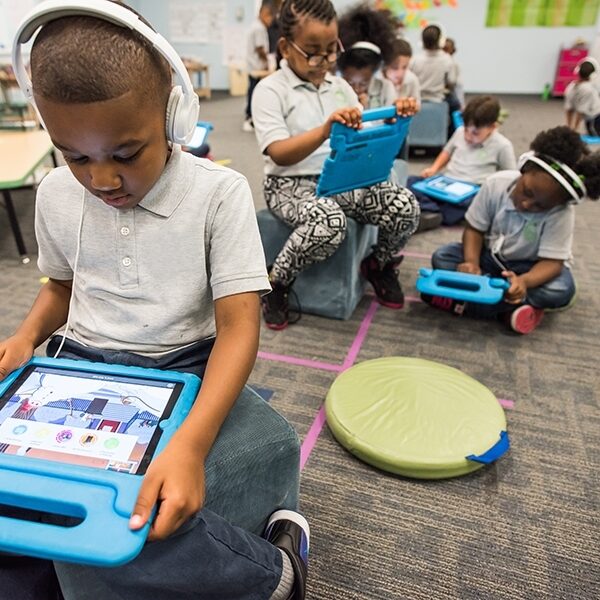
I often look at the world around me to better understand the world we need to create in our schools and educational ecosystems. In this journey, I bump up against a lot of analogs that give us lessons we can apply to better enhance the interactions between students, between students and teachers, and between students and their learning environment.
Miguel McKelvey is the co-founder and chief culture officer of the innovative “real-estate” company, The We Company, the parent company of We Work. If you aren’t familiar with We Work, it is, to use a colloquialism of the day, a “disruptor” of how we use, share, and work in space together – and I don’t mean outer space, but rather the physical space around us. McKelvey, who grew up in an Oregon commune, is now helping to lead a company that has over 10,000 “members” in hundreds of locations worldwide. The organization has shifted ideas about the way we engage with work by re-engineering how physical space can transform interactions. Indeed, the core value that drives McKelvey’s work isn’t actually about work at all, but instead, connection.
At his core (and taking him at his word), McKelvey is a communitarian. He is driven to connect with people, and, as humans, we have a deep need to connect with others. Through his work at The We Company, he has engineered spaces that allow people to come together, work, and interact with those they may have otherwise never met. The challenge for McKelvey is always the authenticity of the connection and the quality of the connective tissue between different people who do different things.
In their book, “Building School 2.0,” Lehmann and Chase describe schools as villages. “Schools,” they say, “are where we come together.” They go on to describe the fundamentality of schools as an organizing principle of society: “As a nation, we can imagine many different models for school, but the fundamental idea that we build places where all children can come together to learn remains one of the best ideas we’ve ever had as a society.”
It is clear that our world is changing. Indeed, The Learning Accelerator and other organizations like ours exist, in effect, to help support educators as they manage that change and to catalyze more change in service of better outcomes for students and families. Often, change happens in the world outside of school buildings at a much faster pace for a variety of cultural and resource reasons. The challenge that we face as educators is to remember that our responsibility to our students and families is to sit, perhaps uncomfortably, in two worlds at once: the world of insulating our children and schools from disruptive change that isn’t additive or poses too high a cost AND the world of ensuring that our schools are preparing students for a future we can’t fully predict.
We Work provides an example for us that is both futuristic and primal. As organizations and companies challenge us with ideas of virtual and highly individualized learning (a seductive idea for some futurists), I find hope in an alternative idea, and one We Work exemplifies: that schools should remain essential for places of collective learning, not only because that meets a deep biological need, but because leading organizations have recognized that connection is essential and are creating spaces to foster it.
The analogs here for how we create spaces in schools are rife with lessons. If We Work is a model for the future of work, then schools should be thinking more deeply about how to organize space, time, and interactions so that our students have the ability to practice these new forms of engagement. Below are some ideas for how we can translate that conceptual idea to our schools and classrooms.
From Theory to Practice:
- Ask yourself every day: “How is my office/building/school/classroom organized to foster the kinds of interactions that future work will require of our students – but also the kinds of interactions that deepen the connective tissue between humans?” Many personalized learning programs have adopted strategies that we have seen in successful primary schools for decades, the station rotation and teacher conference strategy. At Leadership Public Schools in the San Francisco Bay Area, teachers are creating small groups to address and build skills, and then disbanding those groups once the skills are mastered. The ability to convene, problem-solve, and then disperse is a key skill students will use in their future work. Learn more about this approach from LPS Richmond.
- Find ways to make learning more communal. If the rooms or workspaces are oriented toward the front of the room looking at a whiteboard, are there ways to re-engineer the room so that desks and workspaces are connected and facing each other instead? Another strategy LPS Richmond employs is setting up team work tables, where groups of students have distinct spaces to use for work and collaboration. This builds the kinds of skills that help students master competencies while preparing them for the demands of highly collaborative work in the future. Discover more details about this approach.
- Redefine engagement. Collaborative classrooms require new spaces and a reorientation of our old views of engagement. Because our workspaces no longer resemble industrial manufacturing (rows of workers), our classrooms should push to abandon the model of rows of students facing a board. Instead, our spaces should be more student-centered, focused on solving problems in context, and alive with a buzz of chatter and energy. At Valor Collegiate Academy in Tennessee, teachers are encouraged to create flexible seating arrangements and learning pods for students to maximize small-group discussions of rigorous content. See what a Valor classroom looks like in action.
How are you thinking about ways to improve connection in your schools? Tweet @LearningAccel and me, @100percentjones with your ideas and experiences!

